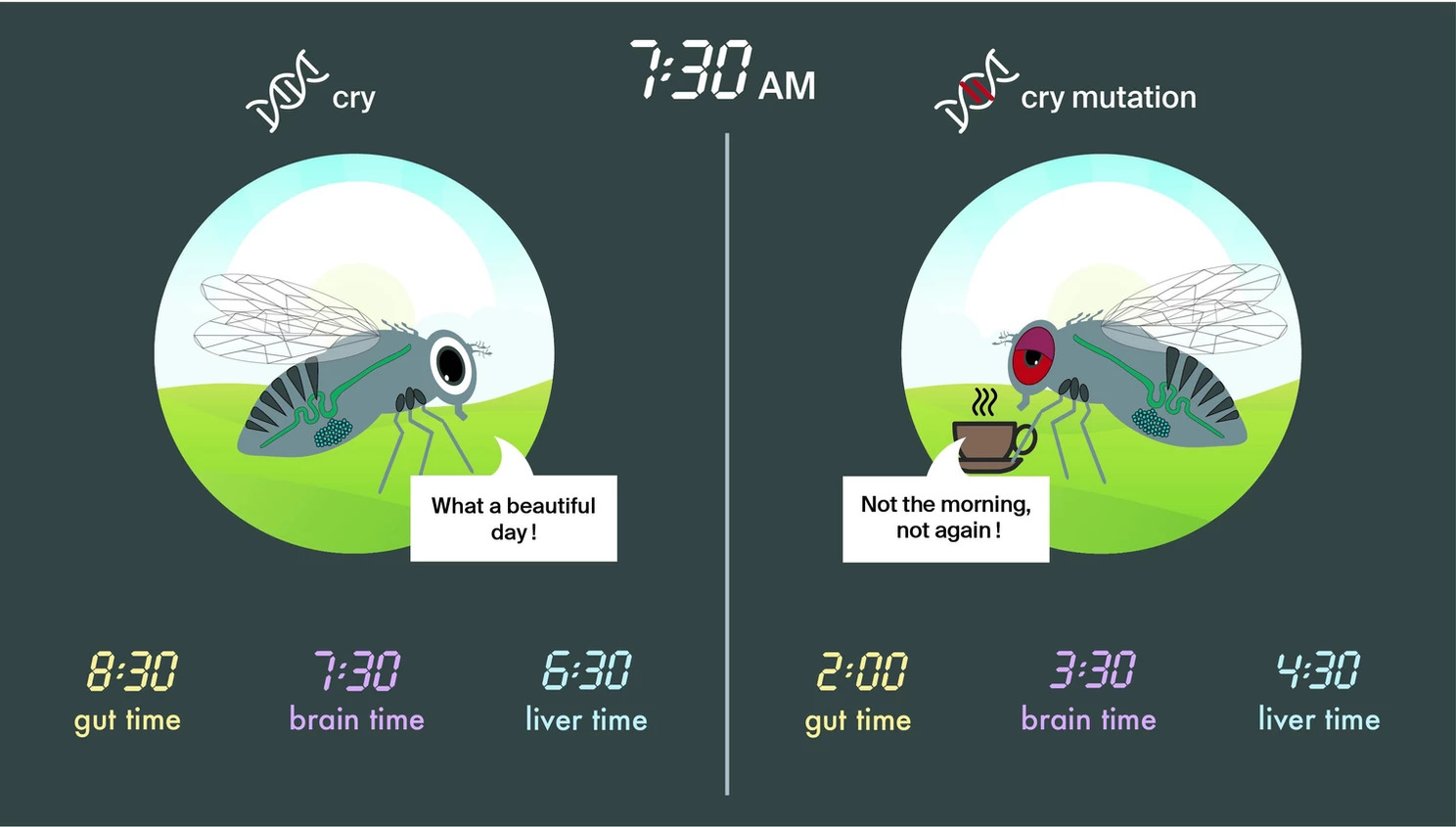Life scientists have been using the Drosophila Melanogaster, commonly known as the fruit fly, for over a century now as a model system to study complex fundamental biological mechanisms.
Sharing around 60% of human DNA, the humble insect has been the linchpin of countless scientific discoveries, from genetic inheritance and gene mutation to neurodegenerative disorders like Alzheimer’s and Parkinson’s.
The Drosophila has also been used extensively in the study of the circadian rhythm, a process shared by virtually all living organisms, including animals, plants, and even microbes. Apart from sleeping and waking, it affects multiple aspects of our bodies, including hormone release, eating and digestion, as well as body temperature.
Recently, scientists led by Bart Deplancke at EPFL’s School of Life Sciences (Switzerland) have carried out an extensive Drosophila-based study to elucidate which genes in various tissues of the animal that have different expression patterns along the circadian cycle.
The scientists leveraged a fly resource called the Drosophila Genetic Reference Panel (DGRP), which contains more than 200 well-annotated and genetically distinct Drosophila lines.
From DGRP flies, the scientists performed RNA-seq on over 700 different tissues across different lines
As a result, the scientists detected more than 1700 genes whose expression cycles under the control of the circadian clock, with only fourteen of those genes being the same across all tissues in the fruit fly.
Moreover, each individual fly seems to have its own unique circadian rhythm, which may explain the large range of human behaviors.

